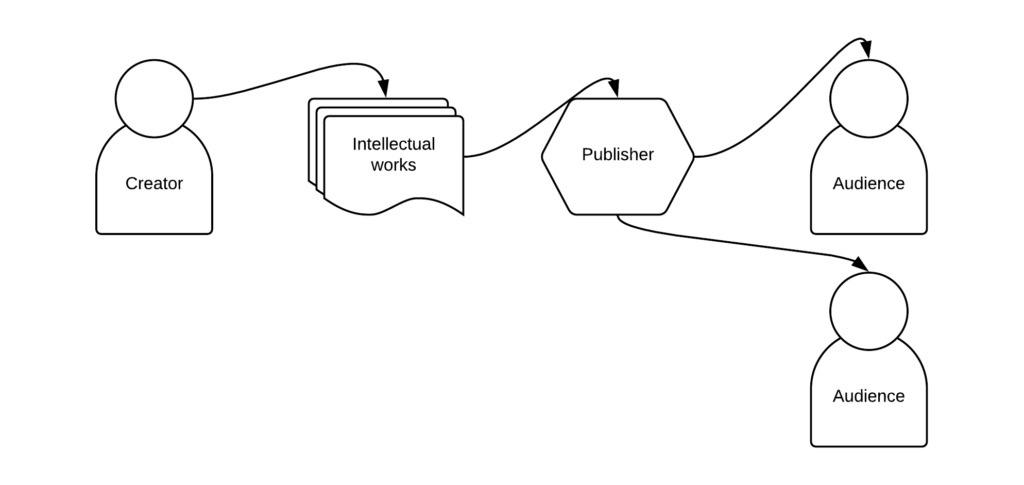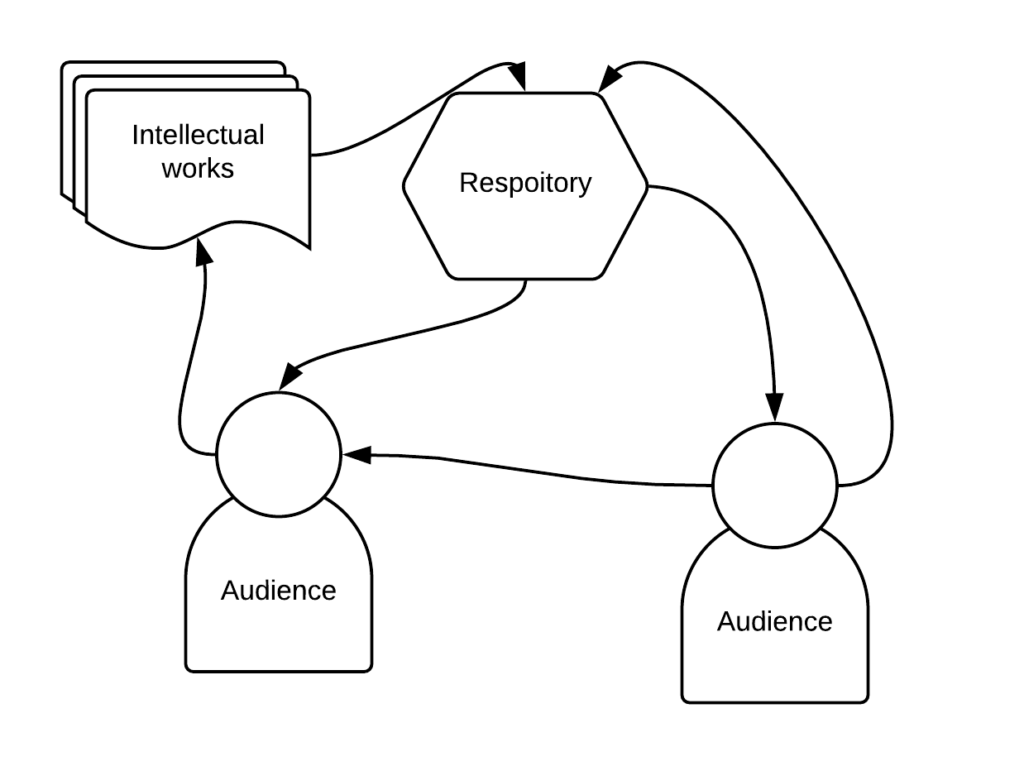Recently, a colleague asked me, “What is the difference between open educational resources and the materials I get from a publisher?” While the most obvious answer for educators is “cost,” it seems there is something far more important for educators, and that is the right to revise and redistribute works that are licensed under Creative Commons and similar licenses. She challenged me to draw a picture to show the differences. The images below represent my first attempt:

Basically, publishing finds authors or creators of works transferring the copyright to a third party. Thereafter, that publisher controls access to the work. Works are distributed one copy to each individual in the audience (at a cost) and individuals have limited rights to use the work. Fair use excepted, those who purchase a copy of a work cannot copy or edit it or create other derivative works. Once a work is published, the owner of the copyright mediates all access to the work.
An open educational resources, however, is released under a copyright license that allows the audience to edit and redistribute the work. This is my first attempt at representing that:

Creators or authors of OER place them in a repository (often peer-reviewed) and the audience can access the works there. They download the works, make changes as they need, then distribute them to others and back into the repository.
For educators, open resources are particularly useful. When a textbook is found to be weak in one particular area, the educators is forced to supplement with ancillary materials and managing those pieces can distract from meaningful tasks. If an OER is found to be weak in one particular area, then the educator can incorporate the changes into the original. The new derived work is contributed back into the repository and the improved work can be further improved by others. The use of OER is much more nuanced than this, but it seemed to satisfy my colleague who is now investigating the use of the resource in her classroom.